Abstract
Fresh mushrooms (Agaricus bisporus) were inoculated in the stem, gill, or cap with Clostridium botulinum spores. They were placed with uninoculated mushrooms in paper board trays, which were then covered and sealed in a polyvinyl chloride stretch film to simulate prepackaged mushrooms available at retail stores. When incubated at 20 C, botulinum toxin could be detected as early as day 3, or 4, when the mushrooms still appear edible. Mushrooms inoculated in the stem with 1,000 type A spores frequently became botulinogenic; higher spore levels were needed if gills or caps were inoculation sites. Type B spores were less apt to produce toxic mushrooms. Respiration of the fresh mushrooms used up O2 more rapidly than could enter through the semipermeable wrapping film, so that the equilibrium O2 concentration became low enough for growth of C. botulinum. Inoculated mushrooms did not become botulinogenic when held at 4 C.
Full text
PDF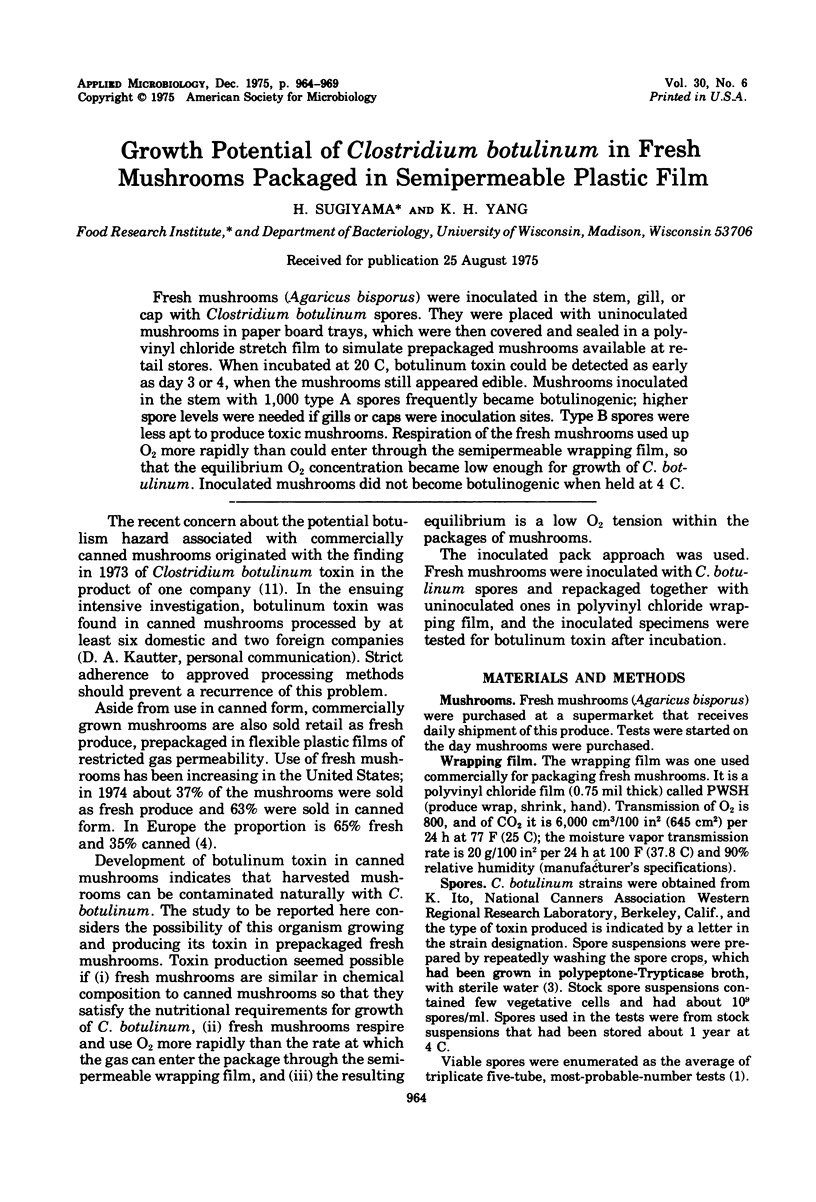
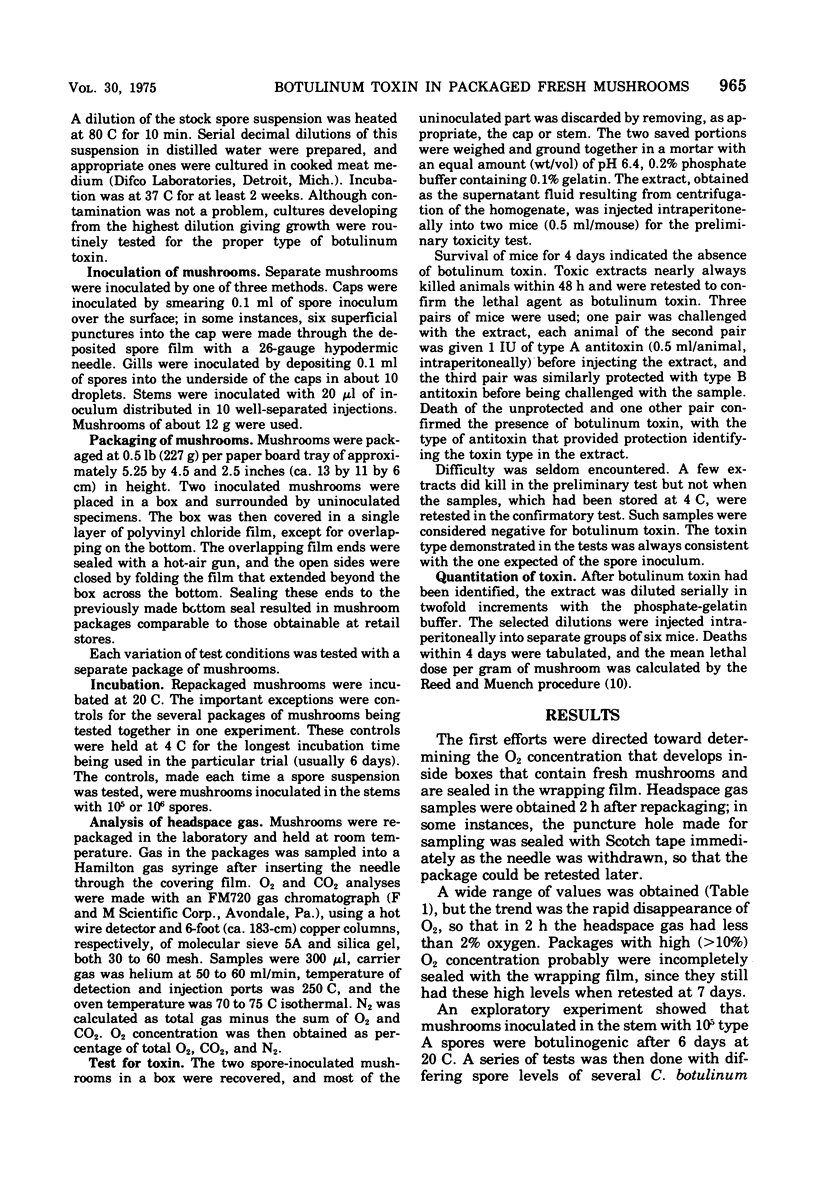
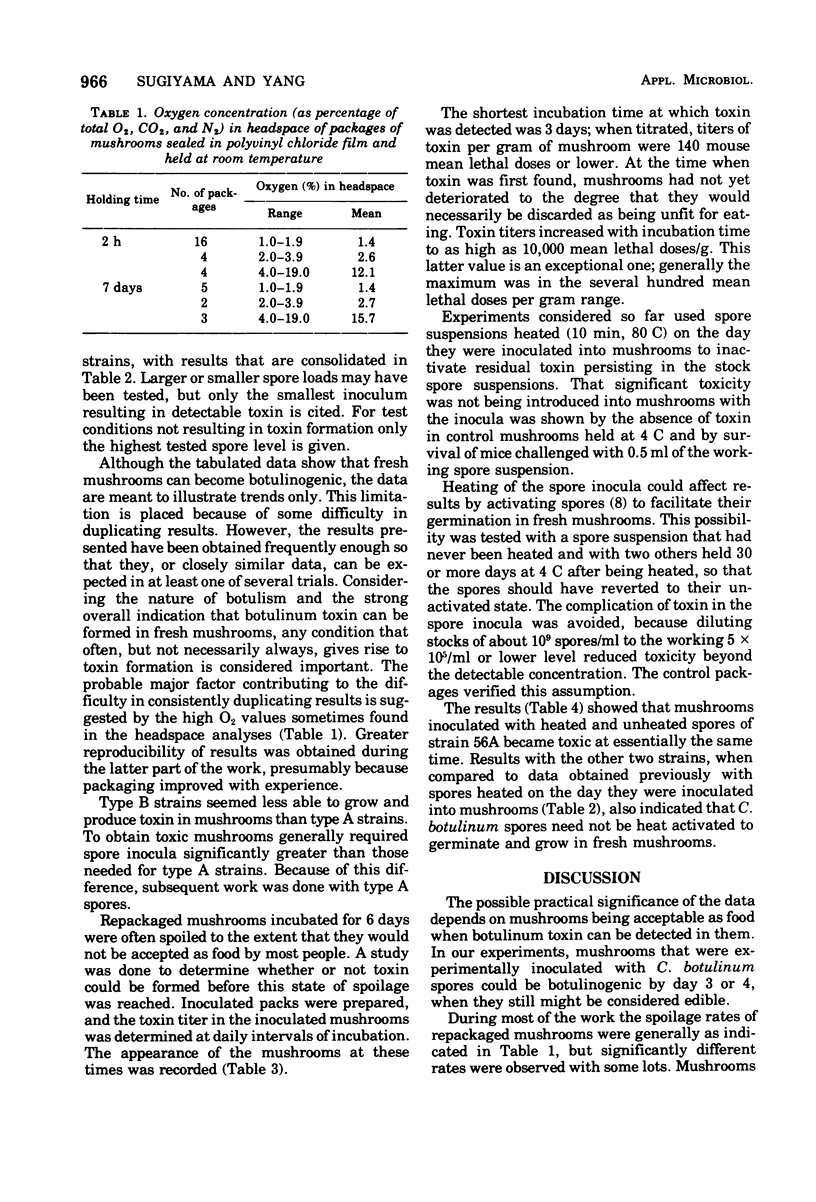
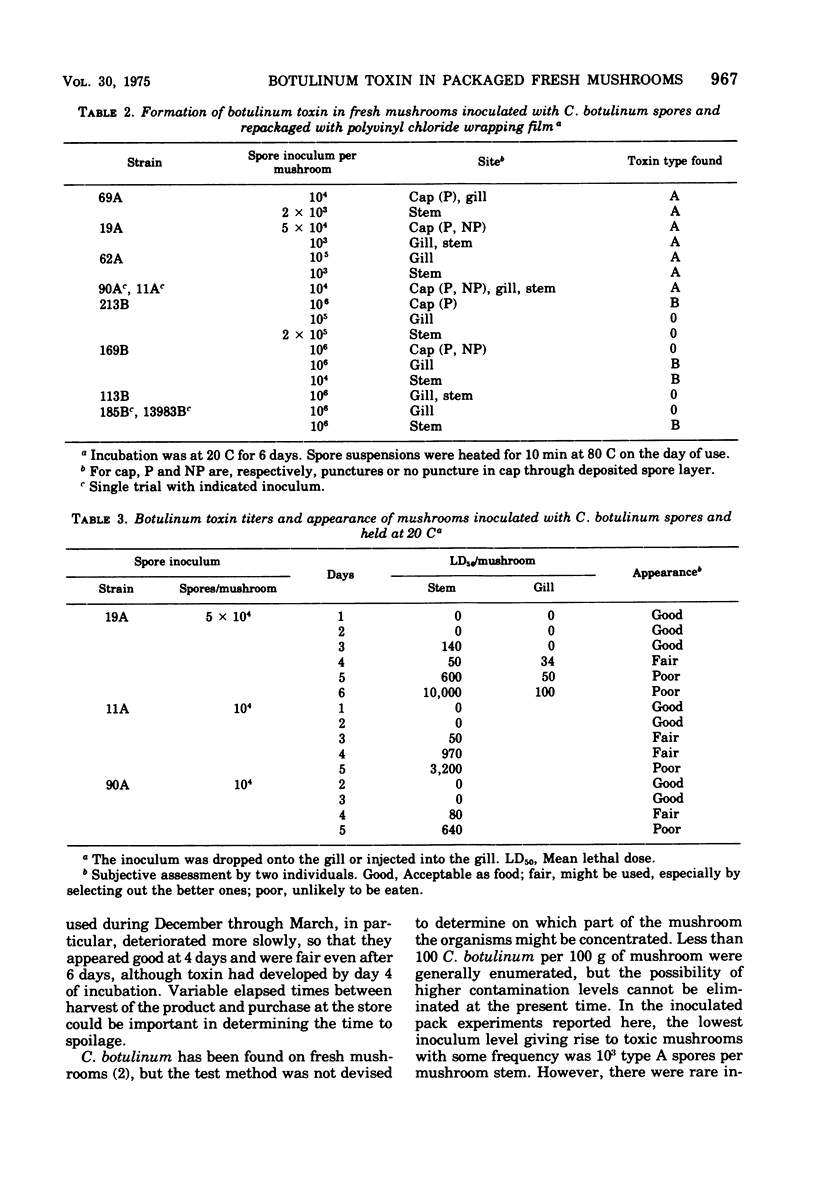

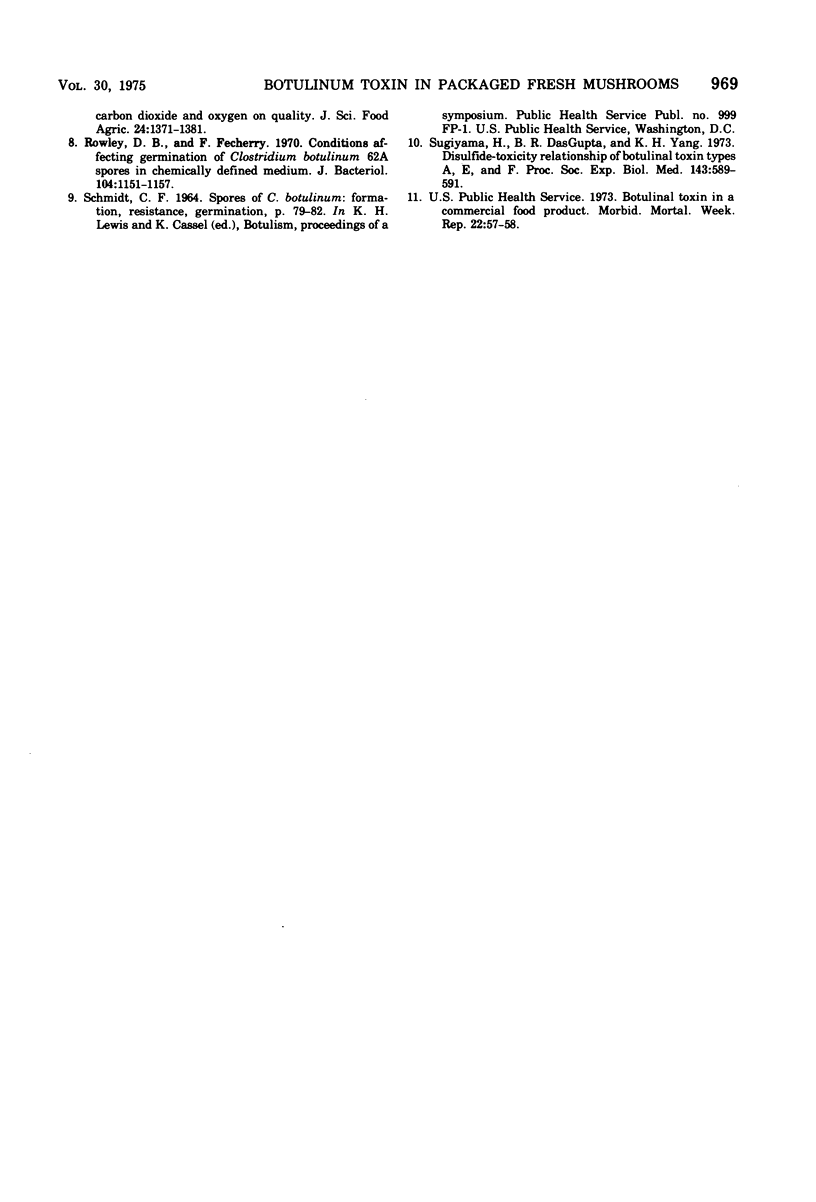
Selected References
These references are in PubMed. This may not be the complete list of references from this article.
- Loesche W. J. Oxygen sensitivity of various anaerobic bacteria. Appl Microbiol. 1969 Nov;18(5):723–727. doi: 10.1128/am.18.5.723-727.1969. [DOI] [PMC free article] [PubMed] [Google Scholar]
- Rowley D. B., Feeherry F. Conditions Affecting Germination of Clostridium botulinum 62A Spores in a Chemically Defined Medium. J Bacteriol. 1970 Dec;104(3):1151–1157. doi: 10.1128/jb.104.3.1151-1157.1970. [DOI] [PMC free article] [PubMed] [Google Scholar]
- Sugiyama H., Das Gupta R., Yang K. H. Disulfide-toxicity relationship of botulinal toxin types A, E, and F. Proc Soc Exp Biol Med. 1973 Jul;143(3):589–591. doi: 10.3181/00379727-143-37372. [DOI] [PubMed] [Google Scholar]


